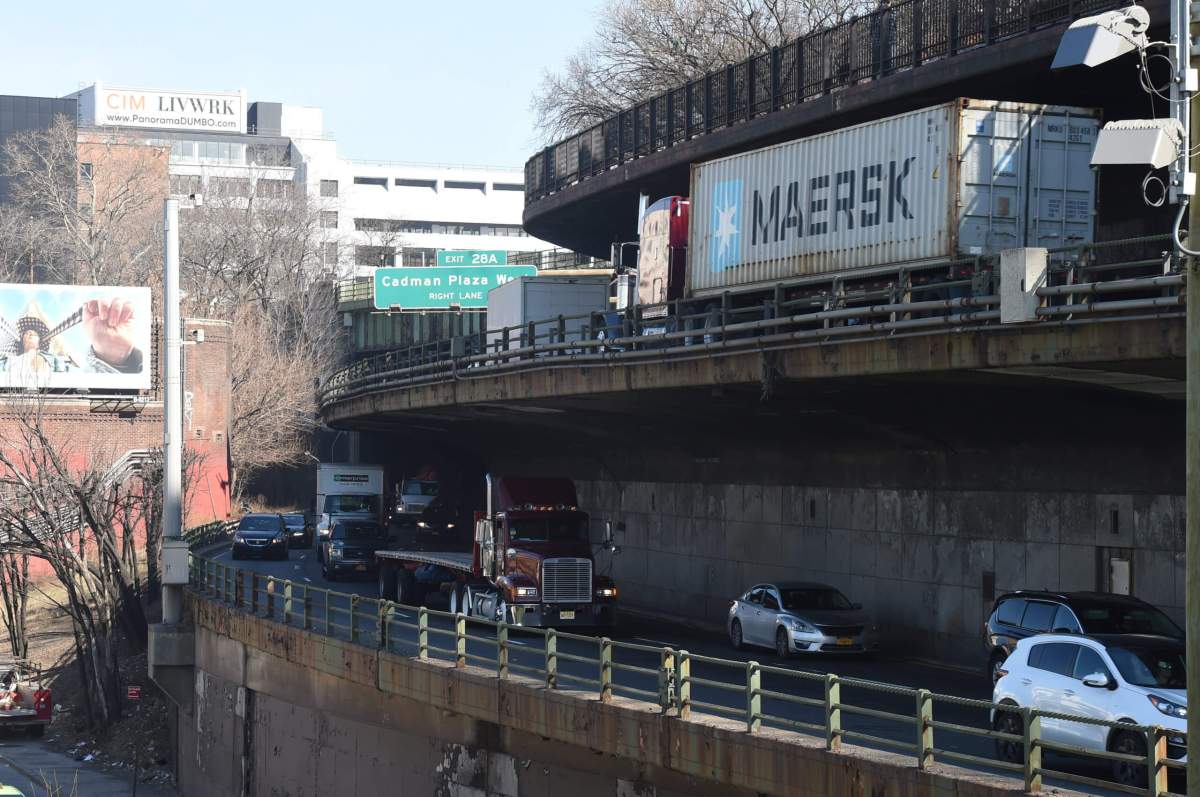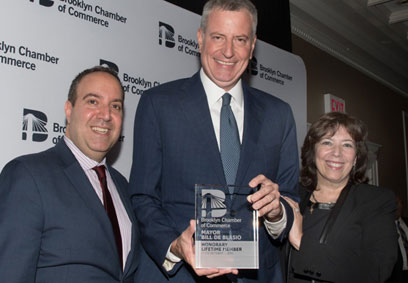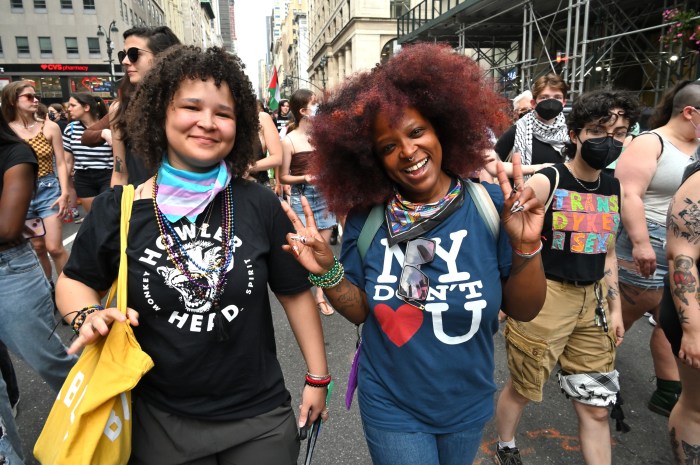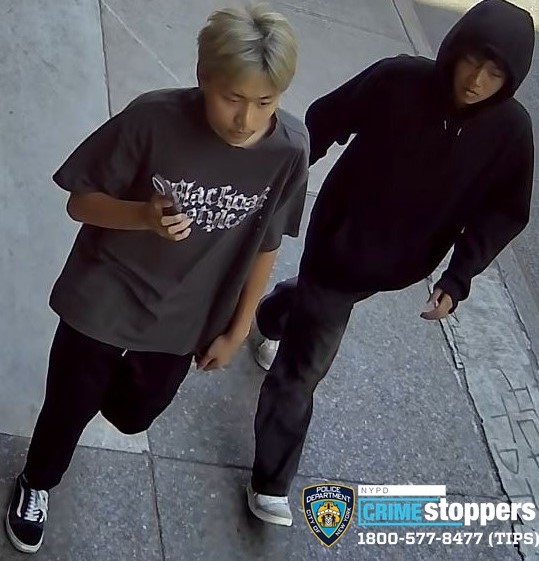Government leaders must use new federal infrastructure dollars to demolish the Brooklyn-Queens Expressway and rebuild it to meet 21st century needs, according to an influential construction industry honcho.
“I have one mission in life [on] infrastructure and that is to work with communities and create, I believe, the largest infrastructure [investment] in America,” said Carlo Scissura, president of the New York Building Congress at a morning panel discussion Wednesday, Nov. 10. “It’s called knocking down, redesigning, and rebuilding a Brooklyn-Queens Expressway for people, for communities, and for all of us in our city.”
The head of the building trade advocacy group said money from President Joe Biden’s recently-passed $1.2 trillion infrastructure bill, along with a new governor and a soon-to-be new mayor will make for the perfect time to redesign the highway.
“I get out [of the subway] at Fourth Avenue and I love Sunset Park… But then what happens, I walk down the block and the worst monstrosity in the United States, I have to look at,” Scissura said. “It is the most ridiculous, disgusting eyesore. It’s dangerous, it’s polluted, it’s rusted, let’s all chant, ‘tear the BQE down, tear the BQE down.’”
The BQE was built under the reign of power broker Robert Moses in the 1950s, destroying several working-class neighborhoods on its path, including along Third Avenue in Sunset Park near where Scissura spoke at an infrastructure breakfast hosted by the Brooklyn Chamber of Commerce in Industry City.
Scissura is no stranger to the years-long discussions about what to do with the BQE, having chaired a so-called expert panel convened by Mayor Bill de Blasio to study fixes for the roadway’s decaying triple-cantilever section wrapping around Brooklyn Heights after locals rebelled against the city’s proposal to run a temporary six-lane highway on the beloved local promenade during renovations.
“We had no money three years ago, now we’ve got money and we’ve got a city and a state that are working together, we can actually get some incredible things done,” Scissura told Brooklyn Paper’s sister publication amNewYork Metro.
Congress passed Biden’s infrastructure package on Friday and the spending plan includes $1 billion for a first-ever program to “reconnect communities divided by transportation infrastructure.”
A White House fact sheet cites the I-81 in Syracuse or the Clairborne Expressway in New Orleans as cases of highways that cut through poor communities of color, but there are several prime examples in the Big Apple, such as the BQE, which is part of Interstate 278, and the Cross Bronx Expressway.
The funding for the initiative was whittled down from an original $20 billion during negotiations in the Senate, but the US Department of Transportation said it will still reconnect as many as 20 communities by removing parts of interstates and repurposing former rail lines.
“This is a moment to do something right, it’s a moment to say we’ve got an investment, we’ve got a moment to really rebuild our highway system,” said Scissura.
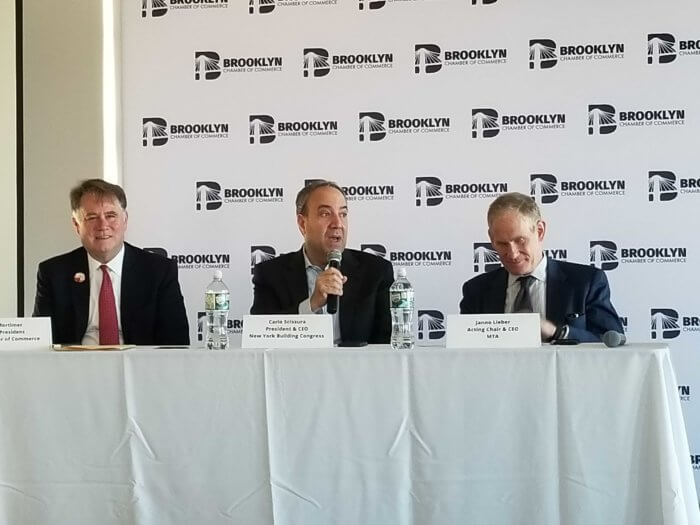
The agency’s chief, Transportation Secretary Pete Buttigieg, cited examples in New York documented by historian Robert Caro in his famous study of Moses “The Power Broker.”
“If a highway was built for the purpose of dividing a white and a Black neighborhood or if an underpass was constructed such that a bus carrying mostly Black and Puerto Rican kids to the beach … in New York was designed too low for it to pass by, that that obviously reflects racism that went into those design choices,” Buttigieg said.
Transportation @SecretaryPete: " If an underpass was constructed such that a bus carrying mostly Black and Puerto Rican kids to a beach, […] in New York was designed too low for it to pass by, that that obviously reflects racism that went into those design choices." pic.twitter.com/0XWkDZehYM
— The Hill (@thehill) November 8, 2021
Senate Majority Leader Chuck Schumer, Bronx Congressmember Ritchie Torres, and city DOT Commissioner Hank Gutman rallied in Parkchester on Tuesday calling for the funds to be used to cap the trenched roadway that cuts through the borough, and on Wednesday Mayor-to-be Eric Adams voiced support for improving that thruway and the BQE.
“We do need to really roll back the Robert Moses division of our city and reunite neighborhoods and communities,” Adams told Brian Lehrer on WNYC. “One solution will solve a multitude of problems, you cap it, you bring communities together, green space, there’s some great things we can do with that.”
The renewed attention for the highways came as a blessing to the head of the Brooklyn Height Association, a storied civic group that has been battling the BQE since Robert Moses first proposed to build it through the neighborhood half a century ago.
“There finally seems to be a moment where, hopefully, the state and federal government are working together for the benefit of the city,” said BHA executive director Lara Birnback.
“The relationship between New York City and Albany is in a better place than it’s been for a long time to make progress on this,” she added. “The communities are ready, willing, and able to be a partner on this work with the city, state, and federal officials.”
This story first appeared on amNewYork.


